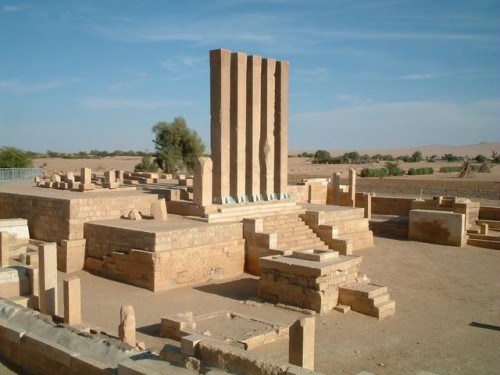Saba was built in the southern Arabian peninsula in the 11th century BC, is a great civilization. The Sabaean kingdom is located in what is now the Aseer region in southwestern Yemen…


The oldest manuscript which states the existence of The Saba are annual war records from the time of the Assyrian king, Sargon II. According to this inscription, Sargon called Saba as one of the country that pay tribute to him. This is definitely the oldest record of the country preaching the Saba.
Note that preach the ancient Saba stated that, as with Phunisia nation, they are the country that perform commercial activities, and a number of important trade routes in the northern Arabian exist within their power. Population Saba famous in history as a nation civilized. Inscription from the rulers of Saba often talk about “improvement”, “financing”, “development”.

Ma’rib Dam, the ruins still remain until now, is important evidence of technological progress Saba. Thanks to this dam, a green country lying in the middle of the desert. Its capital, Ma’rib, benefited by this dam, and became prosperous because of its geographical advantage. The city is situated near the river Adhanah. Saba utilize this location to build dams along with the development of their civilization, and began to irrigate the area.Agriculture became prosperous and they also enjoy a high standard of living.
Ma’rib Capital is one of the most beautiful cities in his time. Greek writer, Pliny, who visited and highly praised this country, said in his work on the green country. Dams in Ma’rib altitude 16 meters by 60 meters width, and length of 620 meters. Calculations show; two vast plains on either side of the city is able watered dam. Both plains are sometimes depicted in the inscriptions of Saba nation as “Ma’rib and plains twins.”
The phrase “Two gardens on the right and the left” in the Qur’an is very likely referring to the wineries and orchards this charming in the two valleys. Thanks to dams and irrigation facilities, the region is renowned as the best irrigation and fertilization in Yemen.
When we study the verses of the Qur’an based on the findings of this history, we find great compatibility between the two. The discovery of archaeological and historical evidence actually fits with that written in the Qur’an. The prophet who ignores warnings sent to them, and are not grateful for the favors of Allah, they were eventually punished with terrible disaster. The Qur’an recounts:
Indeed, for Saba, there are signs (the power of God) in their residence are two gardens on the right and the left. (To be said): “Eat ye of sustenance (given), your Lord and thank you to Him. (Your land) is a good country and (Lord) God is Oft-Forgiving “. But they turn away, then We bring to them a big flood and we replace them with two second garden is overgrown garden (the trees), bitter fruit, trees and a bit of tree Atsl Sidr. Thus do We reward them for their disbelief.And we do not impose punishment (such), but only to people who are ungrateful rejecters.
(Surah Saba, 34:15-17)
Saba live in a beautiful area with wineries and lush gardens. Saba country lies in the path of making it very prosperous commerce, and making it one of the leading city in his time.Which only needs to be done Saba in this spaciousness is “provision that was given to eat their Lord and give thanks to Him.” But they do not, in fact, as is said in a verse, “they turned away from God …”
Pride of the prosperity they cause them loss. All the land was leveled by a devastating flood.Wineries and orchards Saba suddenly disappeared immersed water. Punishment that befell the people of Saba described in the Qur’an with the phrase, “Sailul ‘Arim,” or the Flood’ Arim. The term of this Qur’an also tells us how this disaster happened. The word “” Arim “means” dam “or” dyke “. ”Sailul ‘Arim” describes how the flooding took place after jebolnya dam.
Christian archaeologist Werner Keller agreed that the Flood ‘Arim accordance with the description of the Qur’an, he wrote:
During the 1500 years of this spice plantations flourished around Ma’rib. This lasted until the year 542 BC, is, when the dam was breached. Gently cover the barren desert land is fertile and mengancurkan everything. The Qur’an tells “The Saba has beautiful gardens with the most expensive fruits are ripe.” But people are turning away from God, so He punished them with jebolnya dam. After that nothing is grown in gardens Saba country, except the bitter fruit trees.
sumber dari: testingunderground.wordpress.com

No comments:
Post a Comment